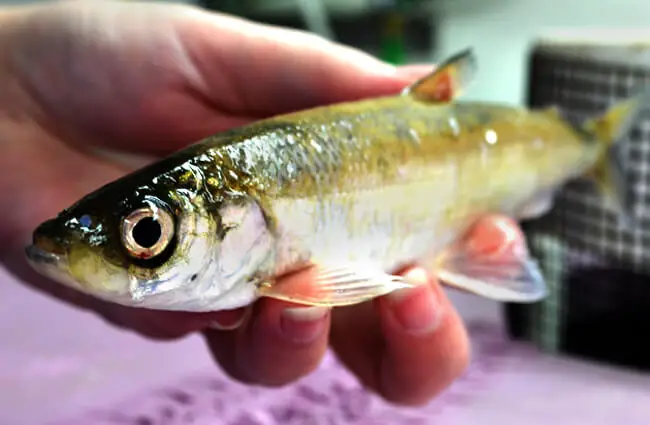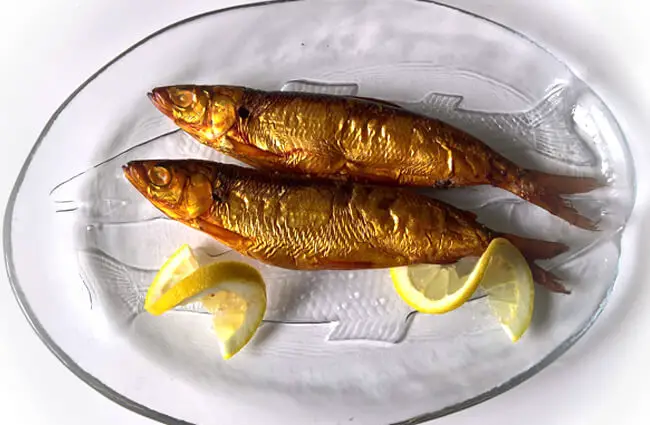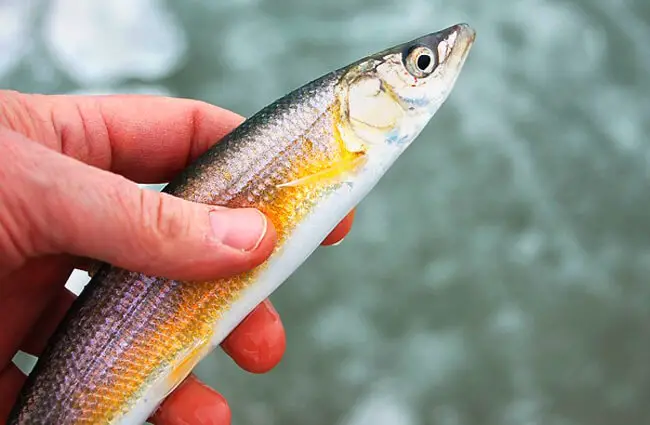Deep beneath the surface of cold, clear waters, a fascinating group of fish thrives, often overlooked yet profoundly important to both aquatic ecosystems and human history. These are the Whitefish, a diverse subfamily within the Salmonidae family, distant cousins to salmon and trout, yet possessing their own unique charm and ecological significance. From the vast expanse of the Great Lakes to the icy reaches of the Arctic, Whitefish represent a triumph of adaptation, embodying resilience and a complex life history that continues to intrigue scientists and nature enthusiasts alike.
Embark on a journey into the world of Whitefish, exploring their hidden lives, their vital role in freshwater environments, and their enduring connection with humanity. Prepare to uncover the secrets of these often-underestimated aquatic inhabitants.

The Diverse World of Whitefish: An Introduction
Whitefish are not a single species but a broad classification, primarily belonging to the subfamily Coregoninae within the Salmonidae family. This group encompasses a remarkable array of species, each uniquely adapted to its specific environment. While they share a common ancestry with salmon and trout, Whitefish typically exhibit smaller mouths, larger scales, and a more silvery, less colorful appearance, hence their common name. Their bodies are generally elongated and streamlined, built for navigating cold, often deep, aquatic habitats.
Key species include the iconic Lake Whitefish (Coregonus clupeaformis), a commercially important fish in the Great Lakes, and various species of Ciscoes or Lake Herring (genus Coregonus), such as the Bloater (Coregonus hoyi), known for their deepwater existence. Other genera like Prosopium (round whitefishes) and Stenodus (inconnu or sheefish) also fall under the Whitefish umbrella, showcasing the incredible diversity within this group.
Where to Find Them: Whitefish Habitats
Whitefish are predominantly freshwater inhabitants, preferring cold, oxygen-rich waters. Their distribution is circumpolar, meaning they are found across the northern hemisphere in North America, Europe, and Asia. These fish are masters of cold environments, thriving in:
- Large, Deep Lakes: Such as the Great Lakes of North America, where various species occupy different depths and niches.
- Arctic and Subarctic Rivers and Lakes: Many species are well-adapted to the extreme conditions of northern latitudes, including glacial lakes and tundra rivers.
- Coastal Waters (Anadromous Species): While most are strictly freshwater, some Whitefish species are anadromous, meaning they spend part of their lives in saltwater estuaries or coastal marine environments before returning to freshwater to spawn. This adaptation allows them to exploit richer food sources in the ocean.
Their preference for cold water means they are often found in deeper parts of lakes during warmer months, seeking thermal refugia where temperatures remain stable and oxygen levels are high. During spawning, they may migrate to shallower shoals or river mouths.

Physical Characteristics and Adaptations
Whitefish typically possess a fusiform (spindle-shaped) body, ideal for efficient movement through water. Their coloration is generally silvery, often with darker backs and lighter bellies, providing camouflage in both open water and against the lakebed. Key features include:
- Small, Toothless Mouths: Unlike their predatory salmon and trout relatives, most Whitefish have small, often subterminal mouths, indicating their primary diet of small invertebrates.
- Adipose Fin: A small, fleshy fin located between the dorsal and caudal (tail) fins, characteristic of all salmonids.
- Large Scales: Compared to salmon and trout, Whitefish scales are generally larger.
- Forked Tail: A deeply forked caudal fin provides powerful propulsion.
These physical traits are finely tuned for their cold, often deepwater existence, allowing them to efficiently filter feed or forage on the bottom.
What’s on the Menu? Whitefish Diet
The diet of Whitefish varies significantly depending on the species, age, and habitat, but generally revolves around small aquatic organisms. They are primarily opportunistic feeders:
- Zooplankton: Especially for younger Whitefish and pelagic (open water) species like Ciscoes, zooplankton forms a crucial part of their diet. They filter these microscopic animals from the water column.
- Benthic Invertebrates: Many Whitefish, particularly the Lake Whitefish, are bottom feeders, consuming insect larvae (chironomids, mayflies), amphipods, snails, and other small crustaceans found on or in the lakebed.
- Small Fish: Larger Whitefish, or those in specific environments, may occasionally prey on smaller fish, though this is less common than for salmon or trout.
- Fish Eggs: During spawning seasons, they may consume the eggs of other fish species, or even their own.
Their feeding strategies often involve cruising along the bottom or through the water column, using their keen senses to detect prey.

Life Cycles and Evolutionary Journeys
Mating and Reproduction: A Winter Ritual
Whitefish reproduction is a fascinating process, often tied to the changing seasons and the onset of colder temperatures. Most species are fall or early winter spawners, a strategy that ensures their eggs develop during the cold months and hatch in spring when food resources become abundant.
- Spawning Migration: Adult Whitefish undertake migrations from deeper waters to shallower spawning grounds. These can be rocky shoals in lakes, river mouths, or even upstream in rivers for anadromous populations.
- Spawning Behavior: Unlike salmon, Whitefish do not build elaborate nests (redds). Instead, females broadcast their eggs over suitable substrates, typically gravel or rocky bottoms, where they are then fertilized by males. There is no parental care after the eggs are laid.
- Egg Development: The eggs are adhesive and settle into crevices among the rocks, providing some protection from currents and predators. Development is slow in the cold water, taking several months.
- Hatching and Fry: Hatching typically occurs in late winter or early spring. The newly hatched fry are tiny and carry a yolk sac for initial nourishment. They quickly begin to feed on zooplankton as they grow.
- Maturity: Whitefish typically reach sexual maturity between 3 to 7 years of age, depending on the species and environmental conditions.
An Ancient Lineage: Whitefish Evolution
The evolutionary history of Whitefish is deeply intertwined with glacial cycles and the formation of modern freshwater systems. Their ancestors likely originated in northern regions, adapting to cold, clear waters over millions of years. The repeated advance and retreat of glaciers played a significant role in their diversification and distribution.
- Glacial Refugia: During glacial periods, Whitefish populations were often confined to ice-free areas, known as refugia. As glaciers retreated, these populations expanded, colonizing newly formed lakes and rivers.
- Speciation: Isolation in different refugia, followed by subsequent contact and interbreeding or further isolation, led to the evolution of numerous distinct species and subspecies. This process, known as allopatric speciation, is evident in the diverse Whitefish fauna of the Great Lakes, where species like Lake Whitefish, Bloater, and various Ciscoes evolved to occupy different ecological niches within the same lake system.
- Adaptations: Over time, Whitefish developed specific adaptations for their environments, including specialized gill rakers for filter feeding, body shapes for different water depths, and reproductive strategies suited to cold-water incubation.
Studying Whitefish evolution provides valuable insights into how species adapt to environmental change and how biodiversity is generated in freshwater ecosystems.
Whitefish in the Web of Life and Human Culture
Ecosystem Contributions and Interactions
Whitefish are integral components of the ecosystems they inhabit, playing crucial roles in energy transfer and nutrient cycling.
- Food Source: They serve as a vital food source for a wide array of predators, including larger fish (lake trout, northern pike), piscivorous birds (loons, eagles, ospreys), and mammals (otters, bears). Their abundance makes them a cornerstone of many northern food webs.
- Prey Control: By consuming vast quantities of zooplankton and benthic invertebrates, Whitefish help regulate these populations, influencing the lower trophic levels of the aquatic food web.
- Nutrient Cycling: As they feed and move through different parts of the water column and lakebed, Whitefish contribute to the redistribution of nutrients within the ecosystem.
- Competition: Whitefish can compete with other fish species for food resources, especially in systems where invasive species have altered the food web dynamics.
Whitefish and Humanity: A Long History
The relationship between Whitefish and humans is ancient and enduring, particularly in northern cultures.
- Indigenous Cultures: For millennia, Whitefish have been a staple food source for Indigenous peoples across North America, Europe, and Asia. Their predictable migrations and abundance made them a reliable resource, often preserved through smoking or drying for winter. They hold significant cultural and spiritual importance in many traditions.
- Commercial Fisheries: Whitefish, especially the Lake Whitefish, have supported major commercial fisheries for centuries. In the Great Lakes, they were historically one of the most important commercial species, valued for their firm, white, flaky flesh and mild flavor.
- Recreational Fishing: Anglers target Whitefish, particularly during ice fishing seasons, for their challenging fight and excellent table fare.
- Cuisine: Whitefish is highly prized for its delicate flavor. It is enjoyed fresh, smoked, fried, baked, or used in dishes like fish pâté. Smoked Whitefish is a particular delicacy in many regions.

Conservation Challenges and Efforts
Despite their resilience, Whitefish populations face numerous threats in the modern era:
- Overfishing: Historically, intense commercial fishing pressure led to declines in some populations.
- Habitat Degradation: Pollution from agriculture, industry, and urban development can degrade water quality, impacting spawning grounds and food sources.
- Invasive Species: The introduction of non-native species, such as zebra mussels and quagga mussels, has drastically altered food webs in systems like the Great Lakes, impacting Whitefish diets and survival. Invasive predatory fish can also pose a threat.
- Climate Change: Rising water temperatures and altered precipitation patterns can reduce suitable cold-water habitat and disrupt spawning cues.
Conservation efforts include sustainable fishing practices, habitat restoration, pollution control, and research into the impacts of climate change and invasive species. Understanding the complex biology of Whitefish is crucial for effective management and protection.

Practical Insights for Enthusiasts and Professionals
Finding Whitefish in the Wild: A Guide for Animal Lovers
For those hoping to observe Whitefish in their natural habitat, patience and knowledge of their preferred environments are key. Direct observation can be challenging due to their deepwater preferences, but certain times and places offer better chances:
- Habitat Focus: Target large, clear, cold freshwater lakes or significant rivers in northern regions. Look for areas with rocky or gravelly bottoms.
- Spawning Season: The best time for potential observation is during their fall or early winter spawning migrations. Whitefish may move into shallower shoals or river mouths, making them more accessible.
- Observation Methods:
- Snorkeling/Diving: In very clear lakes, skilled snorkelers or divers might spot Whitefish on spawning grounds.
- Shore Observation: From elevated vantage points overlooking clear, shallow spawning areas, one might occasionally glimpse schooling fish.
- Angling: While not direct observation, recreational fishing is a common way to encounter Whitefish. Ice fishing is particularly popular for them.
- Respect Wildlife: If you are fortunate enough to find Whitefish, observe from a distance, avoid disturbing spawning fish, and never interfere with their natural behaviors.
Encountering Whitefish as a Hiker: What to Do
As a hiker, your interaction with Whitefish will likely be indirect, perhaps seeing them caught by anglers or observing their habitat. If you encounter them:
- Observe from Afar: Maintain a respectful distance.
- Do Not Disturb: Especially if you are near spawning areas, avoid wading or making excessive noise that could disrupt their sensitive reproductive processes.
- Leave No Trace: Ensure you leave the natural environment as you found it, packing out all trash and minimizing your impact on the ecosystem.
- Appreciate: Take a moment to appreciate the presence of these vital fish and the health of the aquatic environment that supports them.
Caring for Whitefish in Captivity: A Zookeeper’s Guide
Keeping Whitefish in a captive environment, such as a public aquarium, requires specialized knowledge and meticulous care to replicate their natural conditions.
- Water Quality and Temperature:
- Cold Water: Whitefish require consistently cold water, typically between 4°C to 12°C (39°F to 54°F), depending on the species and life stage. A robust chilling system is essential.
- High Oxygen: Excellent aeration and high dissolved oxygen levels are critical.
- Pristine Conditions: Low nitrates, nitrites, and ammonia are paramount. Regular water changes and a highly efficient filtration system (mechanical, biological, chemical) are necessary.
- pH: Maintain a stable pH, generally neutral to slightly alkaline (7.0-8.0), mimicking their natural lake environments.
- Tank Environment:
- Spacious Tanks: Whitefish are active swimmers and can grow quite large. Provide ample swimming space in a large, elongated tank.
- Substrate: A substrate of fine gravel or sand, with some larger rocks or cobbles, can mimic natural lakebeds and provide enrichment.
- Lighting: A natural light cycle is beneficial, avoiding overly bright or sudden changes in illumination.
- Current: A gentle to moderate current can be provided to simulate natural water flow and encourage activity.
- Diet:
- Variety: A varied diet is crucial. Offer high-quality commercial pellets formulated for cold-water fish.
- Live/Frozen Foods: Supplement with live or frozen zooplankton (e.g., daphnia, brine shrimp), bloodworms, and small crustaceans to mimic their natural diet and provide enrichment.
- Feeding Frequency: Feed small amounts multiple times a day, ensuring all food is consumed to prevent water quality degradation.
- Social Behavior and Tank Mates:
- Schooling: Many Whitefish species are schooling fish, so keeping them in groups (of appropriate size for the tank) can reduce stress and encourage natural behaviors.
- Compatible Species: Choose tank mates carefully. They should be cold-water species of similar size and temperament, not overly aggressive or predatory. Lake trout or other cold-water salmonids might be suitable if the tank is large enough.
- Health Monitoring:
- Regular Checks: Daily observation for signs of stress, disease, or injury (e.g., clamped fins, abnormal swimming, lesions, changes in coloration).
- Quarantine: New fish should always be quarantined before introduction to the main exhibit.
- Veterinary Care: Establish a relationship with an aquatic veterinarian for specialized care and advice.
- Avoid:
- Overcrowding: Leads to stress, poor water quality, and disease.
- Rapid Environmental Changes: Sudden shifts in temperature, pH, or water chemistry can be fatal.
- Incompatible Tank Mates: Can lead to aggression, stress, or predation.
- Overfeeding: Contributes to poor water quality and health issues.

Fascinating Facts About Whitefish
- Ancient Survivors: Whitefish have been around for millions of years, adapting through multiple ice ages.
- Deep Divers: Some species, like the Bloater, are adapted to live in very deep parts of lakes, sometimes hundreds of feet below the surface.
- Sensory Specialists: They possess excellent vision and a well-developed lateral line system to detect vibrations and movement in the water, crucial for finding prey and avoiding predators in often murky or deep environments.
- Growth Rings: Like trees, Whitefish scales and otoliths (ear bones) have growth rings that can be used to determine their age.
- Ecological Indicators: The health and abundance of Whitefish populations are often used as indicators of the overall health of cold-water aquatic ecosystems.
- Record Holders: The Inconnu or Sheefish (Stenodus leucichthys), a type of Whitefish, is known as the “tarpon of the north” and can grow to impressive sizes, over 1.5 meters (5 feet) long and weighing more than 25 kilograms (55 pounds).
From their humble beginnings in glacial meltwaters to their current status as vital components of northern ecosystems and cherished culinary delights, Whitefish offer a compelling narrative of survival, adaptation, and interconnectedness. Their story reminds us of the intricate beauty and delicate balance of the natural world, urging us to continue our efforts in understanding and protecting these remarkable fish for generations to come.

![Red Angus Closeup of a beautiful Red Angus cowPhoto by: U.S. Department of Agriculture [pubic domain]https://creativecommons.org/licenses/by/2.0/](https://animals.net/wp-content/uploads/2020/03/Red-Angus-4-238x178.jpg)




![Red Angus Closeup of a beautiful Red Angus cowPhoto by: U.S. Department of Agriculture [pubic domain]https://creativecommons.org/licenses/by/2.0/](https://animals.net/wp-content/uploads/2020/03/Red-Angus-4-100x75.jpg)

